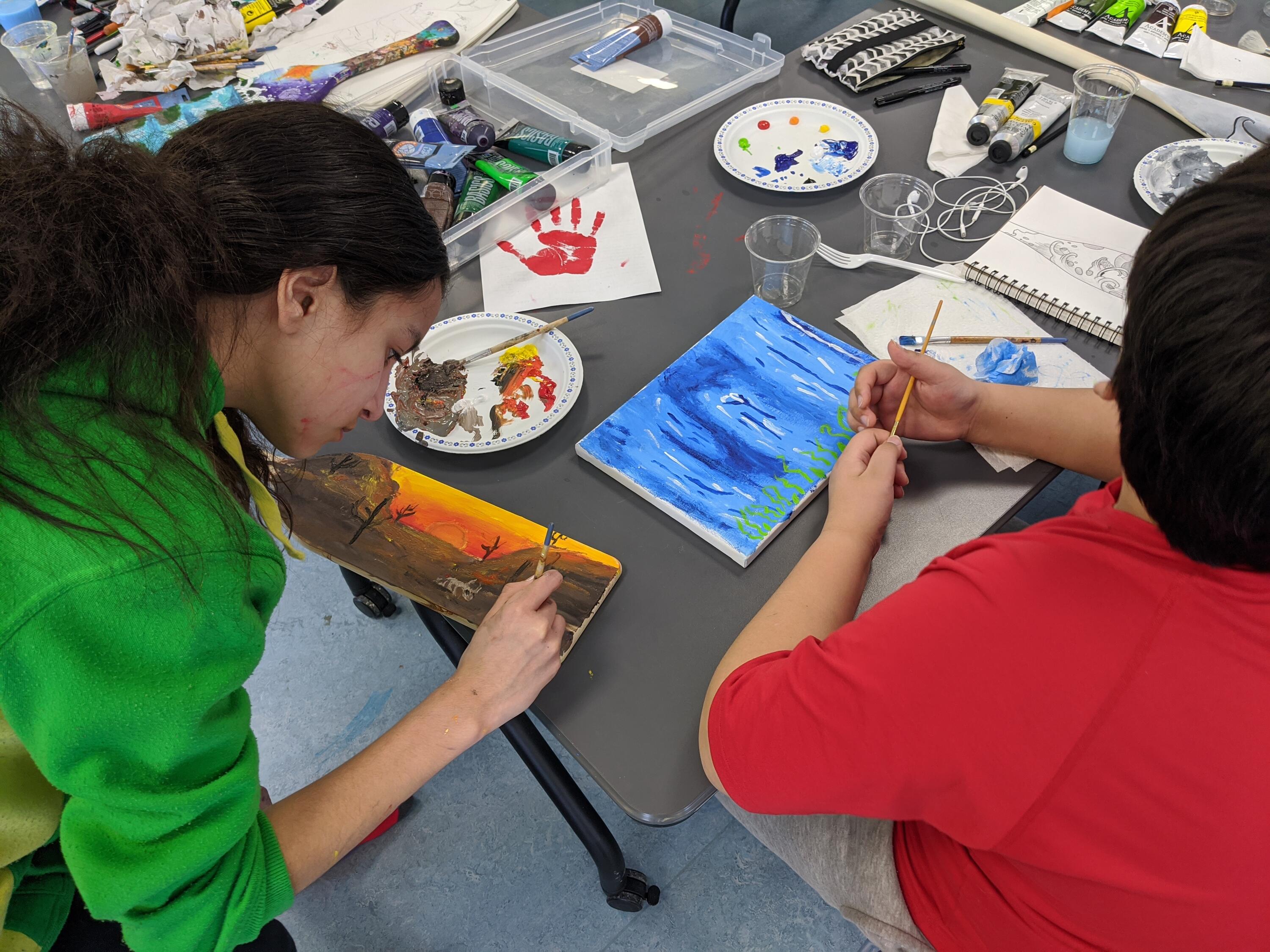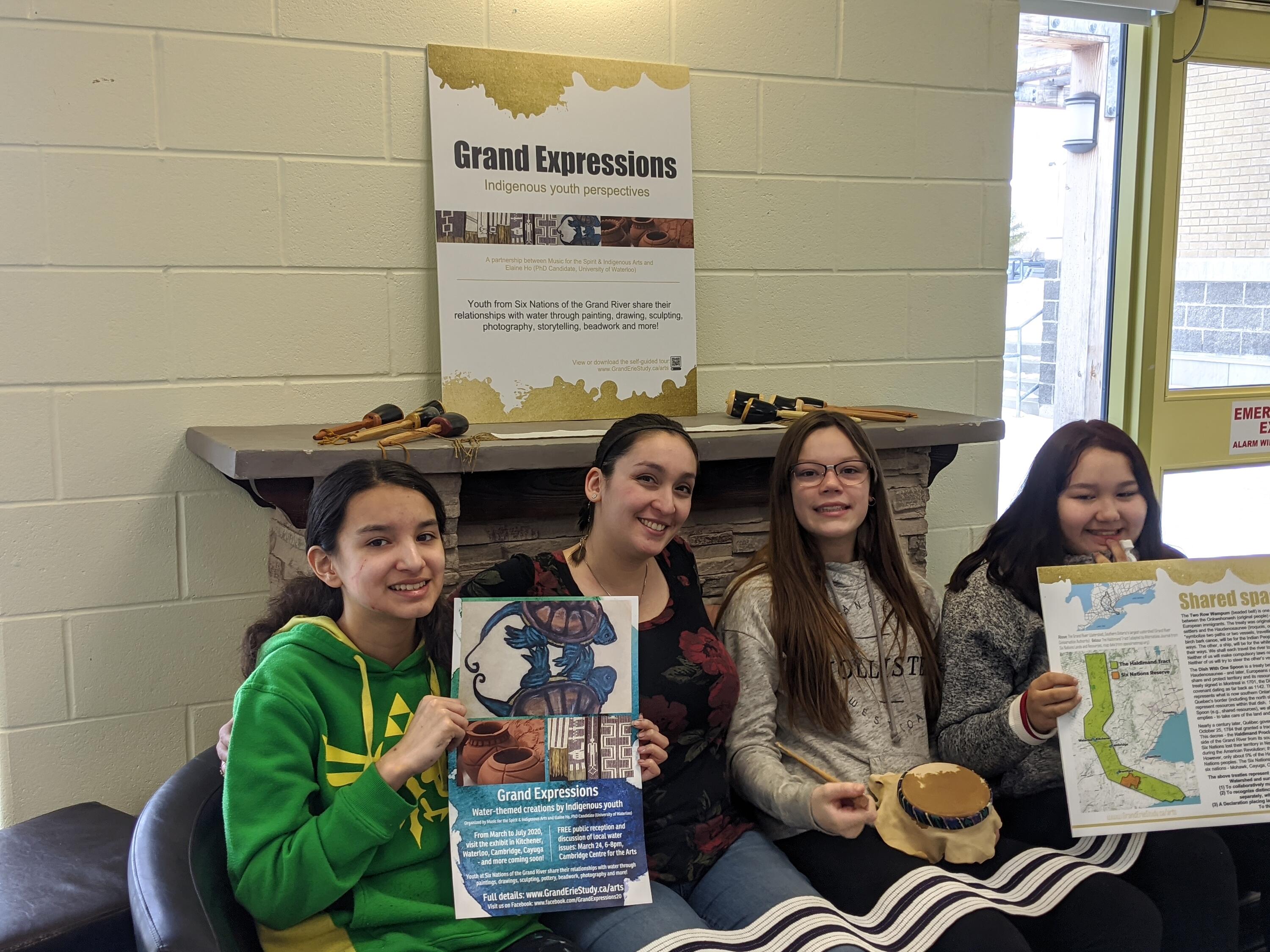In July of 2018, a discussion between Paul General, then-Wildlife Manager at Six Nations of the Grand River, and Elaine Ho, PhD Candidate in Waterloo’s Social and Ecological Sustainability program and Collaborative Water Program, resulted in the idea to engage the Six Nations community through the arts. Elaine then worked with co-creator Richelle Miller, Coordinator of Music for the Spirit and Indigenous Visual Arts, to develop the Grand Expressions exhibit - a project to capture the perspectives of Indigenous youth in a culturally appropriate and relevant way that would educate Canadian communities while informing water managers.

Youth creating pieces during the art camp on February 15, 2020. Adriana Johnson works on 'drought', one side of a two-sided collaborative paddle work titled of 'Two Points of the Problem' (page 14 in the virtual tour). Clinton Bomberry-Smith works on his untitled painting on canvas.
“The objectives of Grand Expressions were to feature young Indigenous people’s voices and creative works in a publicly accessible way, and to capture their relationships with water to inform management,” said Ho. “The stories range from personal experiences – such as lack of access to safe drinking water on reserve – to sharing teachings that have been passed down through generations.”
Ho’s PhD research focuses on the lower section of the Grand River, Southern Ontario’s largest watershed. The river, and many of the major cities around it, are situated in the Haldimand Tract – land promised to the Six Nations community to enjoy and control in perpetuity in return for their alliance during the American Revolution. However, only about 5% of the original Tract remains in the hands of the Six Nations. Representatives of the Six Nations are not typically included in decision-making related to the management of the Grand River or other local natural resources, and, when engagement opportunities occur, many community do not have the procedural knowledge, technologies, or funding capacity to fully participate.

Youth from the Music for the Spirit and Indigenous Visual Arts program together with Elaine Ho, with posters and signage from the Grand Expressions in-person exhibit. Rattles and a water drum represent cultural aspects of the program, while the two beaded belts (wampum) represent historical treaties. The dish with one spoon wampum sits in the background, while the two-row wampum - representing Indigenous and settler nations living side by side - joins the youth and researcher in the foreground.
Initially planned as an in-person experience, Grand Expressions is now being offered virtually through a tablet at THEMUSEUM’s ALARM exhibit. The project has resulted in new community relationships, empowered Indigenous youth, and sparked discussion among staff from local municipalities and the Conservation Authority. Specifically, the project inspired a commitment to a meeting between the youth and the Canadian Minister of Diversity and Inclusion and Youth.
“The art exhibit was originally scheduled to rotate between nine events at eight venues across five cities over six months,” said Ho. “However, due to COVID, all venues shut down after our first location launched successfully. We converted the exhibit to a virtual tour and are thrilled that THEMUSEUM held true to their commitment to the youth, offering us a space alongside their highly-publicized ALARM exhibit so that the youth's work may have exposure to roughly 50,000 patrons over the next six months.”

Waterlily's Unraveling, digital drawing (11" x 14"), Adriana Johnson - pages 23-25 in the virtual tour
Grand Expressions will be offered as part of the ALARM exhibit at THEMUSEUM until January 2021. Learn more.